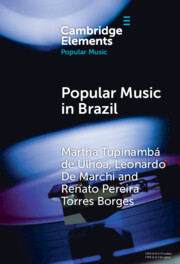Element contents
Popular Music in Brazil
Published online by Cambridge University Press: 04 December 2024
Summary
- Type
- Element
- Information
- Series: Elements in Popular MusicOnline ISBN: 9781009357180Publisher: Cambridge University PressPrint publication: 12 December 2024

